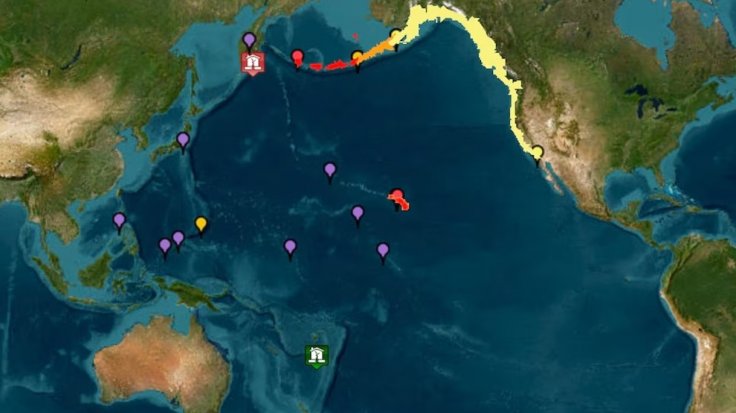
After a massive 8.8 Richter earthquake struck the northern Pacific Ocean on Tuesday (July 29), a tsunami warning has been issued in several parts of the world, including the US. A shocking glimpse into the upcoming natural disaster has been provided with a time-lapse of the 2011 Japan earthquake.
A reconstruction of the quake reveals it took less than 24 hours for the tsunami to cross the largest ocean on Earth, showing how quickly a tsunami can strike the rest of the world. The harrowing minute-by-minute breakdown explains the time it takes for the tsunami to destroy every path in its way.
The massive 9.1 magnitude earthquake struck the northeast coast of Honshu at 2.46 pm local time on March 11. It resulted in a tsunami up to 56ft high that washed inland and destroyed everything in its path. The colossal wave crossed the ocean within a matter of hours, causing devastating consequences to any country within its wake.
After the quake struck Honshu, the tsunami took only three hours to travel 750 miles and reach the south coast of the Kamchatka Peninsula in Russia. Within nine hours, it struck the Gulf of Alaska, and 40 minutes later, the tsunami collided with the California coast. Nearly 14 hours after the devastating earthquake erupted, the tsunami reached the southeast coast of Mexico. It arrived on the shores of southern America within around 20 hours.
High Alert Regions
The regions that are on high alert after the first tsunami wave hit parts of Russia and Japan include the West Coast, parts of Alaska, and Hawaii. The regions under tsunami watch include the Aleutian Islands in Alaska, Oregon, Washington, and California.
"This is not a small threat. This is the kind of threat where the water could flood the land. The models are showing in some places tsunami amplitudes of roughly 10 feet above normal sea level. It will affect all the coasts within the state," Dr. Chip McCreery, a tsunami specialist with the National Oceanic and Atmospheric Administration, shared.









